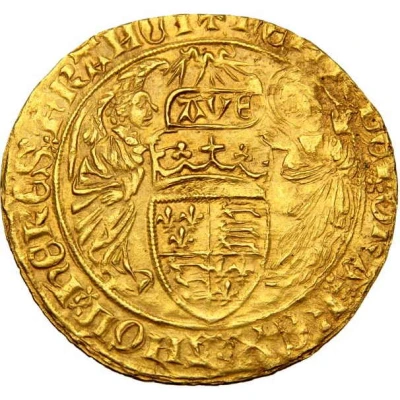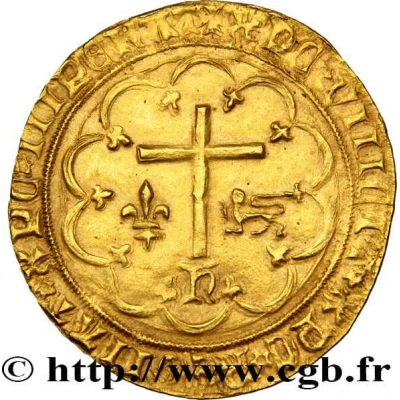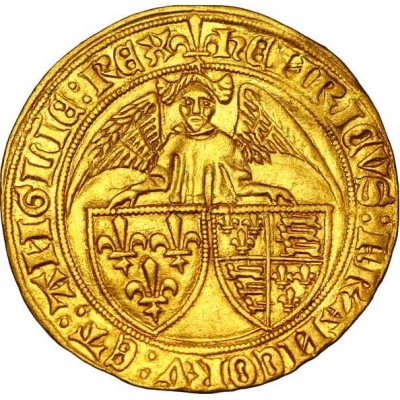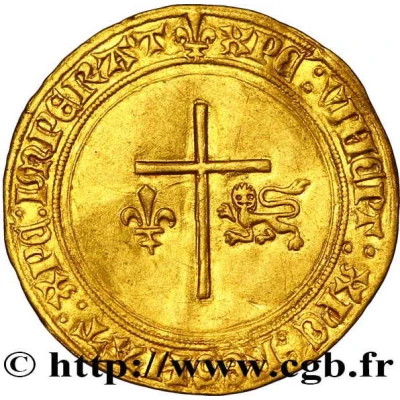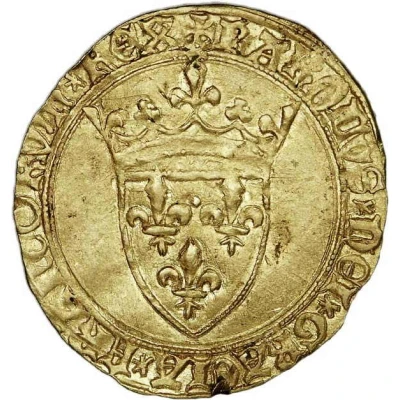
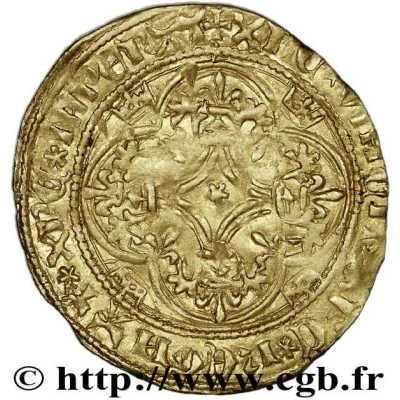

© CGB
Écu d'or à la couronne - Charles VII ND
| Gold (.999) | 3.8 g | 29 mm |
| Issuer | France |
|---|---|
| King | Charles VII (1422-1461) |
| Type | Standard circulation coin |
| Years | 1423-1429 |
| Value | 1 Gold Ecu |
| Currency | Livre tournois (1204-1795) |
| Composition | Gold (.999) |
| Weight | 3.8 g |
| Diameter | 29 mm |
| Shape | Round (irregular) |
| Technique | Hammered |
| Orientation | Variable alignment ↺ |
| Demonetized | Yes |
| Updated | 2024-10-04 |
| Numista | N#329541 |
|---|---|
| Rarity index | 93% |
Reverse
Cross floriated and foliated with a 5-pointed star within a curvilinear rhombus in the heart, all within a quatrefoil flanked by four crowns.
Script: Latin
Lettering: XPC* VIHCIT* XPC* REGNAT* XP’C* INPERAT
Interesting fact
One interesting fact about the Écu d'or à la couronne - Charles VII ND (1423-1429) coin is that it was minted during a time of great economic and political change in France. The coin was introduced by King Charles VII in 1423 as part of a broader effort to reform the French currency and stimulate trade. The Écu d'or à la couronne was the first French coin to be made of pure gold (.999) and was intended to be a symbol of the king's power and prestige. Despite its value, the coin was not widely used in everyday transactions due to its high value and was primarily used for large transactions and as a store of value.
